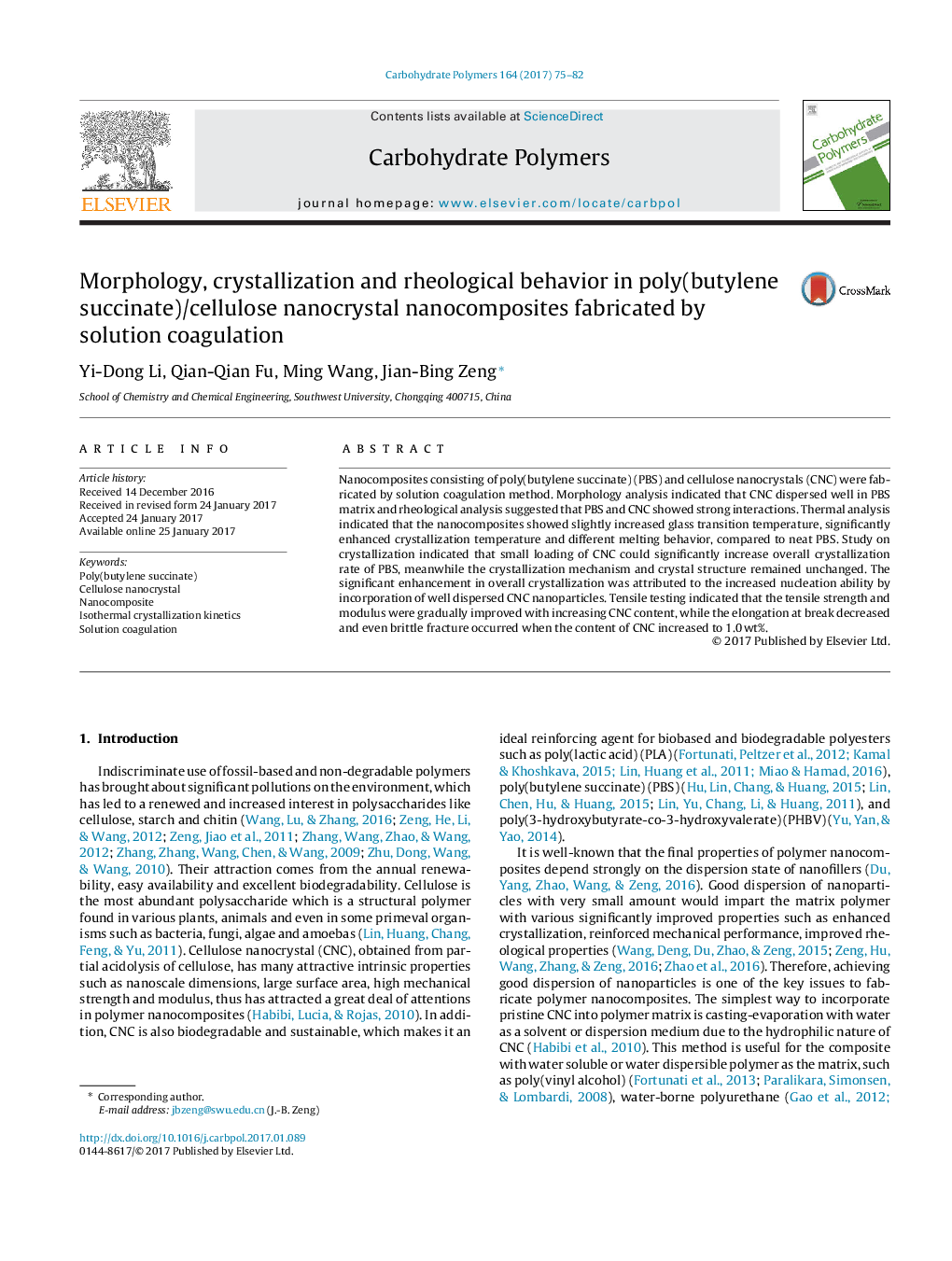| Article ID | Journal | Published Year | Pages | File Type |
|---|---|---|---|---|
| 5157527 | Carbohydrate Polymers | 2017 | 8 Pages |
Abstract
Nanocomposites consisting of poly(butylene succinate) (PBS) and cellulose nanocrystals (CNC) were fabricated by solution coagulation method. Morphology analysis indicated that CNC dispersed well in PBS matrix and rheological analysis suggested that PBS and CNC showed strong interactions. Thermal analysis indicated that the nanocomposites showed slightly increased glass transition temperature, significantly enhanced crystallization temperature and different melting behavior, compared to neat PBS. Study on crystallization indicated that small loading of CNC could significantly increase overall crystallization rate of PBS, meanwhile the crystallization mechanism and crystal structure remained unchanged. The significant enhancement in overall crystallization was attributed to the increased nucleation ability by incorporation of well dispersed CNC nanoparticles. Tensile testing indicated that the tensile strength and modulus were gradually improved with increasing CNC content, while the elongation at break decreased and even brittle fracture occurred when the content of CNC increased to 1.0Â wt%.
Keywords
Related Topics
Physical Sciences and Engineering
Chemistry
Organic Chemistry
Authors
Yi-Dong Li, Qian-Qian Fu, Ming Wang, Jian-Bing Zeng,
